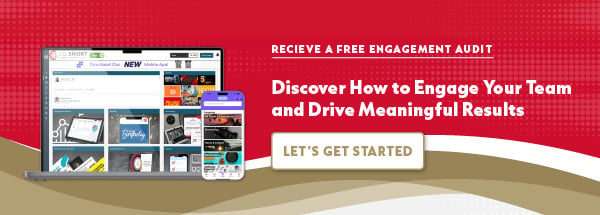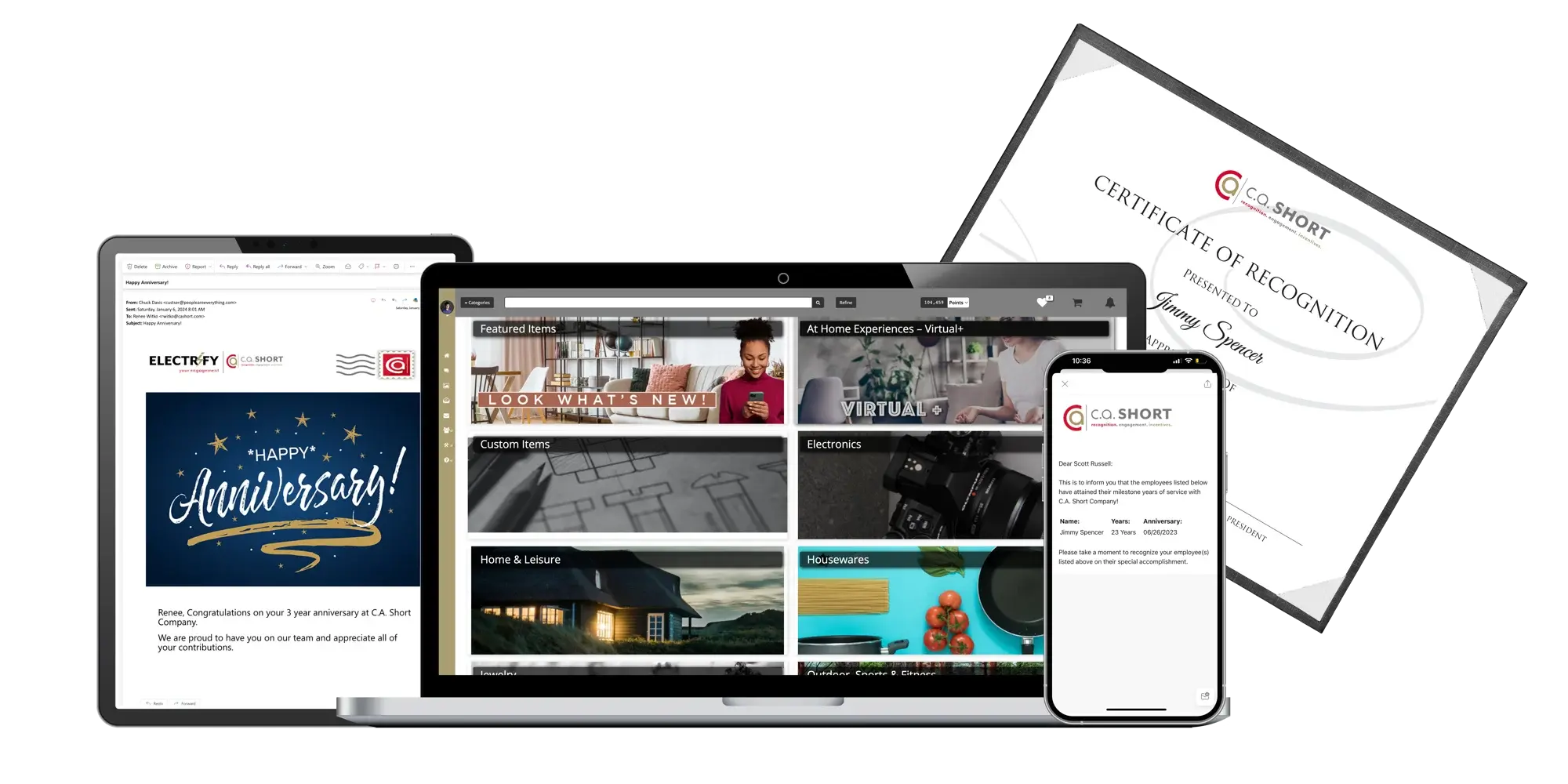In the rush of deadlines, meetings, and quarterly goals, one of the most powerful tools in a manager's toolkit often gets overlooked: recognition. While it might seem like a "nice-to-have" in the grand scheme of business operations, employee recognition is actually a fundamental driver of performance, retention, and workplace satisfaction.
The Recognition Gap in Today's Workplace
Despite its importance, recognition remains surprisingly scarce in many organizations. Studies consistently show that most employees feel underappreciated at work, with many reporting they haven't received meaningful recognition in months or even years. This creates a recognition gap that directly impacts everything from productivity to turnover rates.
The problem isn't that managers don't care about their teams—it's that recognition often falls victim to competing priorities and busy schedules. But this oversight comes at a significant cost to both individual employees and organizational success.
The Dual Power of Monetary and Non-Monetary Recognition
Recognition comes in many forms, but it generally falls into two categories: monetary and non-monetary. Understanding the unique benefits of each, and how they work together, is essential for creating a comprehensive recognition strategy that truly motivates and retains talent.
The Strategic Advantage of Points-Based Monetary Recognition
Points-based recognition systems represent a modern evolution in monetary rewards, combining the tangible value of financial recognition with the flexibility and engagement of gamification. In these systems, employees earn points for various achievements, behaviors, and contributions, which they can then redeem for rewards ranging from gift cards and merchandise to experiences and time off.
- Granular Recognition Opportunities: Unlike traditional bonuses that typically reward major achievements, points systems allow managers to recognize smaller daily contributions. An employee can earn points for helping a colleague, suggesting a process improvement, or consistently meeting deadlines. This granularity makes recognition more frequent and accessible.
- Employee Choice and Autonomy: Points systems give employees control over how they're rewarded. One team member might save points for a significant gift card, while another prefers to redeem smaller rewards more frequently. This choice increases the perceived value of the recognition since employees select rewards that truly matter to them.
- Transparent Value System: Points create clear, quantifiable value for different types of contributions. Employees can see exactly how their efforts translate into rewards, creating transparency that traditional recognition often lacks. This visibility helps employees understand organizational priorities and adjust their efforts accordingly.
- Cumulative Impact: Points accumulate over time, allowing employees to work toward larger rewards while still receiving immediate acknowledgment. This creates both short-term motivation and long-term engagement, as employees can see their efforts building toward meaningful rewards.
- Budget Predictability: For organizations, points systems provide better budget control than traditional bonuses. Companies can set point values and reward catalogs that align with their recognition budgets, preventing the surprise costs that can come with ad-hoc monetary rewards.
- Data-Driven Insights: Points systems generate valuable data about recognition patterns, popular rewards, and employee preferences. This information helps organizations refine their recognition strategies and understand what motivates their workforce most effectively.
- Scalability Across Teams: Points systems work equally well for individual contributors and team achievements. Managers can award points for team projects, department goals, or company-wide initiatives, making recognition scalable across different organizational levels.
However, points-based systems require careful implementation. The point values must feel meaningful, the reward catalog should offer genuine value, and the system needs to be simple enough that it doesn't become bureaucratic or time-consuming to use.
The Profound Benefits of Non-Monetary Recognition
Non-monetary recognition encompasses everything from verbal praise and written thank-you notes to flexible work arrangements, development opportunities, and public acknowledgment. While it doesn't have immediate financial impact, its benefits run surprisingly deep:
- Lasting Emotional Impact: A heartfelt thank-you or public recognition often stays with employees far longer than a bonus. These gestures touch on fundamental human needs for appreciation and belonging, creating emotional connections that endure.
- Daily Motivation: Unlike monetary rewards that are typically given quarterly or annually, non-monetary recognition can happen daily. This frequency creates sustained motivation and reinforces positive behaviors consistently.
- Personal Connection: Non-monetary recognition allows for deep personalization. Understanding whether an employee values public praise, private acknowledgment, or professional development opportunities shows genuine care for them as individuals.
- Cultural Reinforcement: These forms of recognition actively build and reinforce company culture. When managers regularly acknowledge behaviors that align with organizational values, they strengthen the cultural fabric of the team.
- Scalability and Accessibility: Non-monetary recognition doesn't require budget approvals or complex processes. Any manager can implement these strategies immediately, making recognition more frequent and accessible.
- Intrinsic Motivation Boost: Research consistently shows that intrinsic motivators, like feeling valued and having purpose, are more powerful long-term drivers than extrinsic rewards alone. Non-monetary recognition directly feeds these intrinsic needs.
Why Both Matter
The most effective recognition strategies combine both monetary and non-monetary elements. Monetary recognition validates the tangible value of an employee's contributions, while non-monetary recognition addresses their emotional and psychological needs. Together, they create a comprehensive appreciation experience that speaks to the whole person.
For example, a year-end bonus paired with a personalized letter detailing specific contributions and their impact creates both financial reward and emotional connection. Similarly, a promotion with increased salary (monetary) combined with expanded responsibilities and public recognition (non-monetary) addresses multiple motivational drivers simultaneously.
Tailoring Recognition to Individual Preferences
Different employees respond to different types of recognition. Some are primarily motivated by financial rewards and career advancement, while others value flexibility, learning opportunities, or public acknowledgment more highly. The most effective managers learn their team members' preferences and adjust their recognition approach accordingly.
This might mean giving one employee a gift card while offering another employee the opportunity to present their project to senior leadership. Both forms of recognition have value, but their impact varies based on individual preferences and motivational drivers.
The Ripple Effect of Recognition
Recognition creates a multiplier effect throughout organizations. When one team experiences regular appreciation, other teams notice. This can inspire managers across departments to prioritize recognition, gradually transforming company culture. Moreover, employees who feel valued become ambassadors for the organization, speaking positively about their workplace to friends, family, and potential recruits.
Making Recognition Meaningful
Not all recognition is created equal. For maximum impact, recognition should be:
- Specific and Timely: Rather than generic praise, acknowledge particular achievements or behaviors as close to when they occurred as possible.
- Personalized: Consider what type of recognition each team member values most—some prefer public acknowledgment, while others appreciate private conversations or written notes.
- Authentic: Genuine appreciation resonates far more than obligatory or superficial praise.
- Aligned with Values: Connect recognition to broader organizational goals and values to reinforce what matters most.
Implementing Both Types of Recognition
Implementing Points-Based Recognition Systems
- Start with Clear Guidelines: Establish transparent criteria for earning points, ensuring employees understand exactly what behaviors and achievements are valued. Create a points guide that outlines different categories of recognition and their corresponding point values.
- Design a Meaningful Reward Catalog: Offer a diverse range of redemption options that appeal to different preferences and point levels. Include everything from small daily rewards (coffee gift cards, premium parking spots) to larger aspirational items (extra vacation days, electronics, experiences).
- Make it Manager-Friendly: Provide managers with easy tools to award points immediately when they observe great work. The system should be intuitive enough that recognition becomes a natural part of daily management, not an administrative burden.
- Regular Communication: Promote point earnings and redemptions through company communications to maintain visibility and encourage participation. Celebrate both individual achievements and overall program success.
- Gather Feedback and Iterate: Regularly survey employees about the points system's effectiveness and their reward preferences. Use this feedback to refine point values, add new reward options, and improve the overall experience.
Non-Monetary Recognition Ideas
- Start team meetings by highlighting recent accomplishments and their impact.
- Send personalized thank-you emails that detail specific contributions and why they mattered.
- Acknowledge achievements in company communications, newsletters, or all-hands meetings.
- Provide opportunities for skill development, conference attendance, or stretch assignments as investment-based recognition.
- Offer flexible work arrangements or preferred project assignments as rewards for consistent performance.
- Simply saying "thank you" more often, with genuine appreciation, can make a substantial difference.
Creating Balance
The key is finding the right balance for your team and organization. Not every achievement requires monetary recognition, but significant contributions should be rewarded financially when possible. Similarly, don't reserve all appreciation for formal review periods—regular non-monetary recognition keeps motivation high throughout the year.
The Manager's Role in Creating a Recognition Culture
As a manager, you set the tone for your team's experience. Your approach to recognition signals what's valued and expected. When you consistently acknowledge good work, you're not just making individuals feel appreciated—you're establishing standards and creating an environment where excellence is noticed and celebrated.
This doesn't mean recognizing everything indiscriminately, which can dilute the impact. Instead, focus on meaningful contributions, improvements, and efforts that align with team and organizational objectives.
The Bottom Line
Recognition is not a luxury or an afterthought, it's a business imperative. The managers who understand this and act on it consistently will find themselves leading more engaged, productive, and loyal teams. In an increasingly competitive talent market, the ability to make employees feel valued and appreciated isn't just good management, it's good business.
The question isn't whether you can afford to prioritize recognition, but whether you can afford not to. Your team's performance, satisfaction, and retention may well depend on the answer.



.png?width=70&name=Untitled%20design%20(11).png)
.jpeg)

.jpg)

.jpg)

SHARE